CMS347v4 – Statin Therapy for the Prevention and Treatment of Cardiovascular Disease
| Statin Therapy for the Prevention and Treatment of Cardiovascular Disease | CMS347v4 | Percentage of the following patients – all considered at high risk of cardiovascular events – who were prescribed or were on statin therapy during the measurement period: *Adults aged >= 21 years who were previously diagnosed with or currently have an active diagnosis of clinical atherosclerotic cardiovascular disease (ASCVD); OR *Adults aged >= 21 years who have ever had a fasting or direct low-density lipoprotein cholesterol (LDL-C) level >= 190 mg/dL or were previously diagnosed with or currently have an active diagnosis of familial or pure hypercholesterolemia; OR *Adults aged 40-75 years with a diagnosis of diabetes with a fasting or direct LDL-C level of 70-189 mg/dL | |
|---|---|---|---|
| – INITIAL POPULATION- 1
All patients aged 21 years and older at the beginning of the measurement period with a patient encounter during the measurement period |
– DENOMINATOR – 1
Patients aged >= 21 years at the beginning of the measurement period with clinical ASCVD diagnosis |
– NUMERATOR – 1
Patients who are actively using or who receive an order (prescription) for statin therapy at any point during the measurement period
|
|
| – INITIAL POPULATION- 2
All patients aged 21 years and older at the beginning of the measurement period with a patient encounter during the measurement period |
– DENOMINATOR – 2
Patients aged >= 21 years at the beginning of the measurement period who have ever had a fasting or direct laboratory result of LDL-C >=190 mg/dL or were previously diagnosed with or currently have an active diagnosis of familial or pure hypercholesterolemia |
– NUMERATOR – 2
Patients who are actively using or who receive an order (prescription) for statin therapy at any point during the measurement period
|
|
| – INITIAL POPULATION- 3
All patients aged 21 years and older at the beginning of the measurement period with a patient encounter during the measurement period |
– DENOMINATOR – 3
Patients aged 40 to 75 years at the beginning of the measurement period with Type 1 or Type 2 diabetes and with an LDL-C result of 70-189 mg/dL recorded as the highest fasting or direct laboratory test result in the measurement year or during the two years prior to the beginning of the measurement period |
– NUMERATOR – 3
Patients who are actively using or who receive an order (prescription) for statin therapy at any point during the measurement period
|
|
– DENOMINATOR EXCLUSIONS
– DENOMINATOR EXCEPTIONS:
|
|||
| – APPLICATION WORKFLOW
For Denominator – 1: All patients who fulfil the following criteria are included in denominator 1:


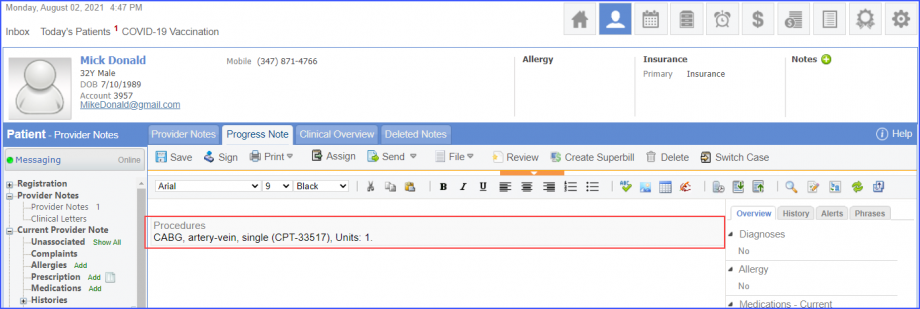 Note: Please ensure that the Procedure is present in the system. For this, navigate to Settings > Billing > Procedure. If the procedure is not added then, click on the ‘Add Procedure’ button. 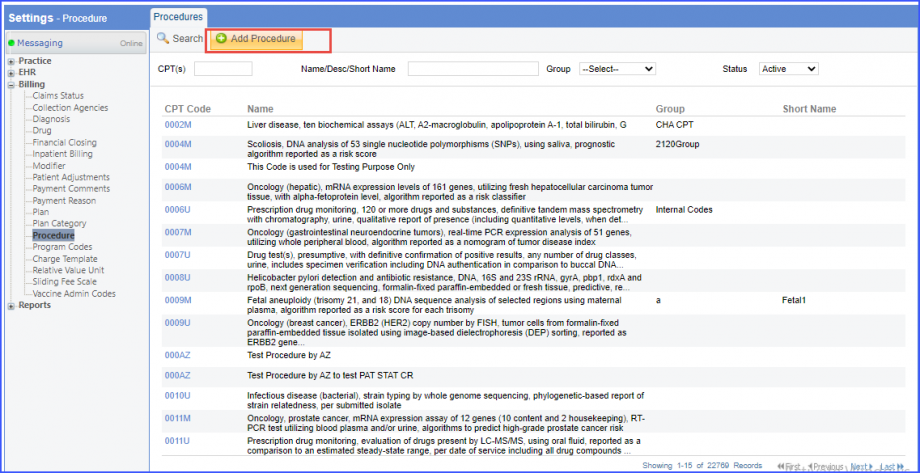 Here, enter the ‘Code’ and ‘Name’ of the Procedure. Once done, click on the ‘Save’ button. 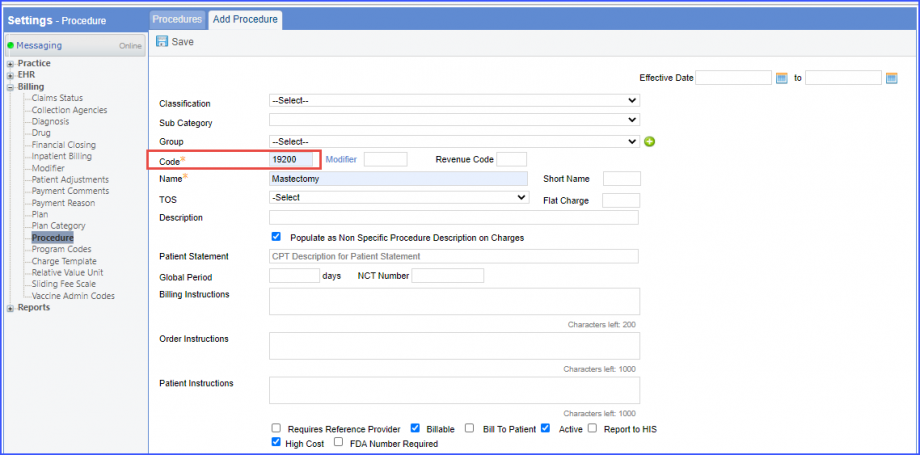 For Denominator – 2: All patients who fulfil the following criteria are included in denominator 2:
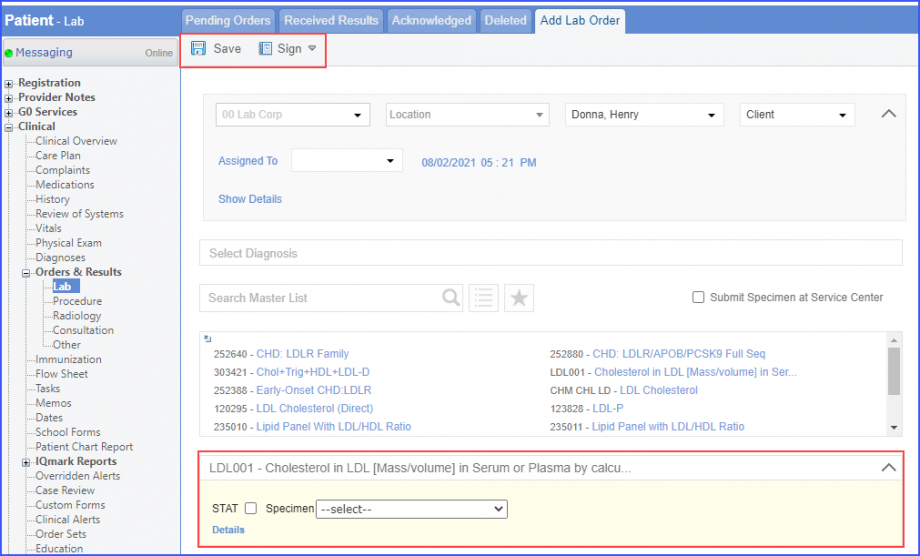 Next, click on the ‘Mark as received’ button. 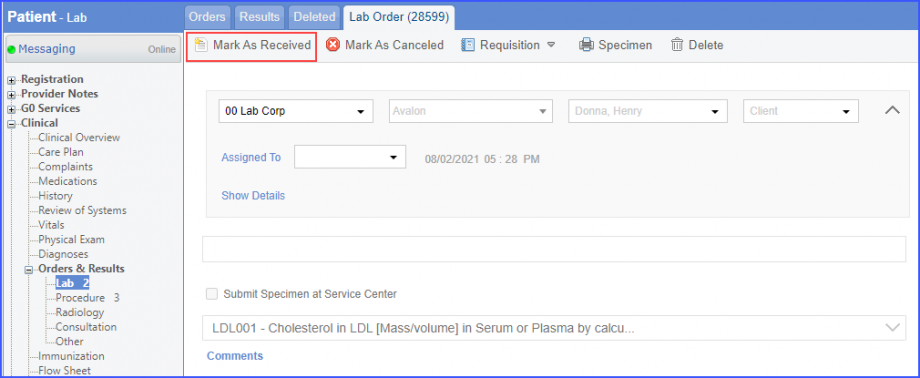 On the lab result screen, add the observations and click on the ‘Save’ button.  Note: For LOINC Code Based Labs: Please ensure that the lab code is mapped to a LOINC Code from the Settings. To map a LOINC with the lab code, navigate to Settings > EHR > Laboratory. Select the Lab and navigate to the ‘Code’ tab. Then, click on the Lab Order. Under the ‘Result Codes and LOINCS’ heading, add a Code, LOINC and Description and click on the ‘Add’ button. Once done, click on ‘Save’. 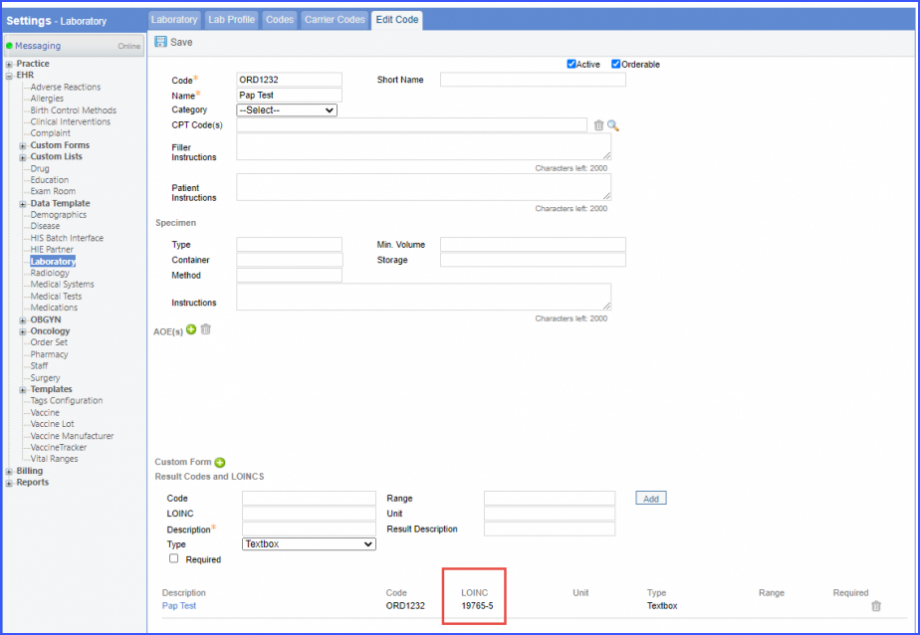 For CPT Code Based Labs: When a CPT code is added to a lab order, please ensure that the CPT code is present in the ‘Procedures’. 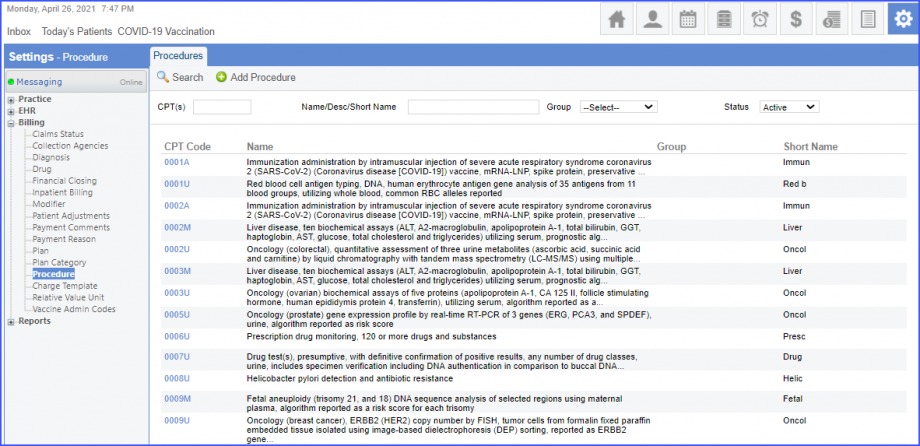 Moreover, the CPT code should be mapped to a LOINC Code from the Settings. To map a LOINC with the CPT code, navigate to Settings > Billing > Procedure. Select the CPT code and navigate to the ‘Edit Procedure’ tab. Under the ‘Procedure Components’ heading, add a Code, LOINC and Description and click on the ‘Add’ button. Once done, click on ‘Save’. 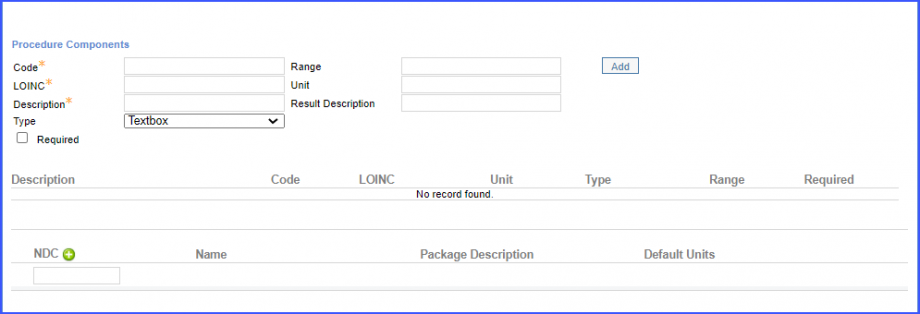
For Denominator – 3: All patients who fulfil the following criteria are included in denominator 3:
For Numerator: Patients who are actively using or who receive an order (prescription) for statin therapy at any point during the measurement period.

For Denominator Exceptions 1 & 2: All patients who fulfil any of the following criteria are included in denominator exceptions 1 & 2.

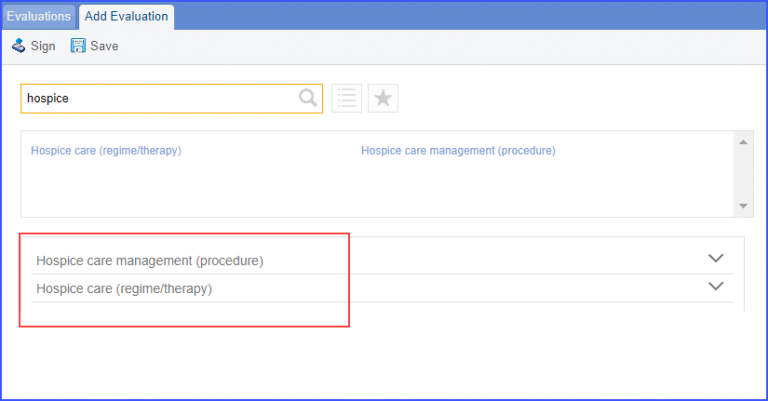
For Denominator Exceptions 3: All patients who fulfil any of the following criteria are included in denominator exceptions 3.
For Denominator Exclusions: All patients who fulfil any of the following criteria are excluded from the denominator.
To record a diagnosis, navigate to Patient > Provider Note > Diagnosis. |
|||
